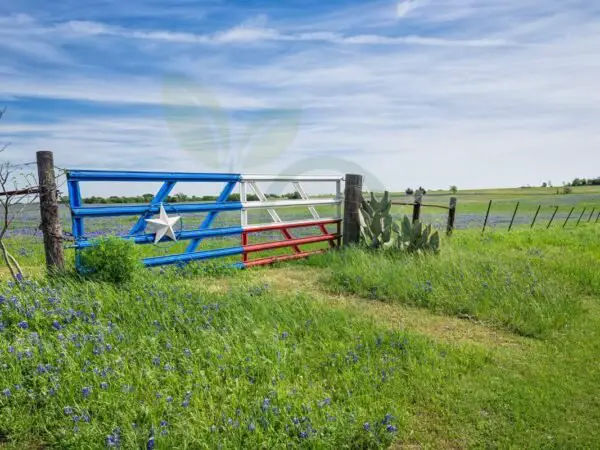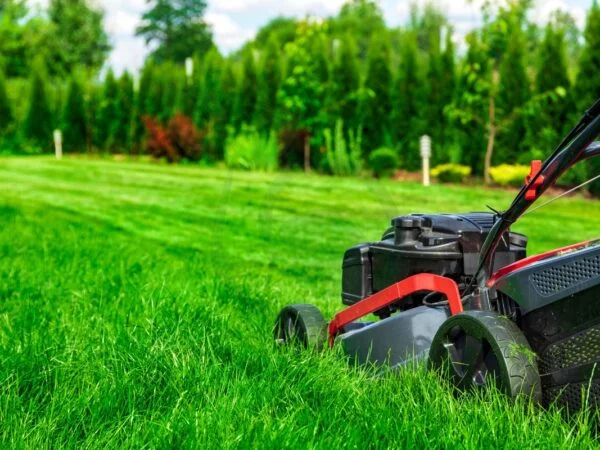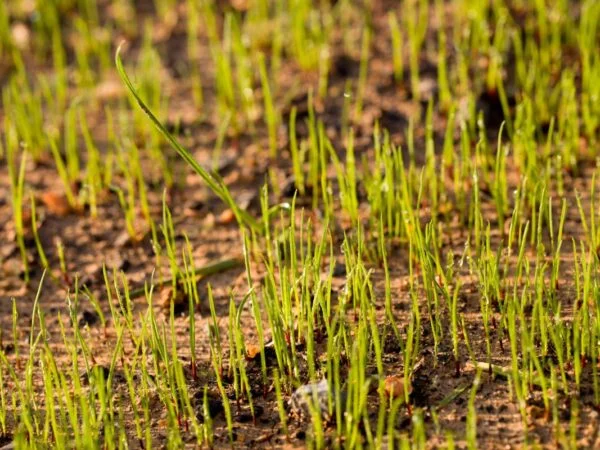Finding the best temp to plant grass seed is crucial for a lush lawn. Understanding the optimal conditions can make or break your landscaping efforts. By knowing when to sow your grass seed, you set yourself up for success in achieving that vibrant green yard you desire. Historical data and modern research have honed our knowledge about the ideal temperature range for planting grass seeds, ensuring better germination rates and healthier growth. Let's delve into the specifics of when to plant your grass seed for maximum effectiveness, considering frost times and pH.
Key Takeaways
- Monitor Ideal Planting Temperatures: Keep an eye on the recommended temperature range for planting grass seed to ensure optimal growth.
- Select Quality Seed Products: Choose high-quality grass seed products that are suitable for your region and specific lawn needs.
- Prepare the Soil Thoroughly: Prior to planting, prepare the soil by removing debris, loosening the top layer, and adding necessary nutrients for better seed germination.
- Timing is Key: Understand the germination expectations of different grass seed varieties and plan your planting time accordingly to maximize growth potential.
- Consider Weather Conditions: Be mindful of the weather impact on seed germination and growth, adjusting your planting schedule based on forecasted conditions.
- Seize the Timing Advantage: Take advantage of the optimal planting window to ensure successful grass seed germination and establishment.
Ideal Planting Temperatures
Optimal Range
Grass seeds thrive in temperatures between 60-75 degrees Fahrenheit. This range fosters optimal germination and root development. Monitoring these temperatures is crucial for successful seed establishment.
Minimum Germination Temp
For grass seed to sprout, a minimum temperature of 45 degrees Fahrenheit is necessary. Deviating from this can hinder germination or lead to poor growth outcomes. Understanding this minimum threshold is key for successful planting.
Cold Tolerance
Different grass seed varieties exhibit varying levels of cold tolerance. Some seeds handle colder temperatures better than others, impacting their growth and survival during chilly seasons. Selecting seeds based on their cold tolerance ensures better resilience against frosty conditions.
Monitoring Temperatures
Soil Temp Tools
To accurately measure soil temperature, use a soil thermometer inserted at the appropriate depth. This tool ensures precise readings for optimal grass seed germination. Soil temperature plays a crucial role in determining the success of seed germination. By monitoring it closely, you can create ideal conditions for your grass seeds to sprout.
When using soil temperature tools, place the thermometer at the seeding depth to get an accurate reading. This ensures that you are providing the best environment for your grass seeds to grow. Regularly monitor and adjust based on these readings to maximize germination rates.
Air Temp Readings
Air temperature directly affects soil temperature, so it's vital to consider both factors when planting grass seed. Understanding this correlation helps in making informed decisions about when to plant your seeds. Interpreting air temperature readings provides valuable insights into creating optimal conditions for seeding.
Weather Impact
50-Degree Germination
Planting grass seed when the soil reaches 50 degrees Fahrenheit is crucial for successful germination. This temperature ensures optimal conditions for seeds to sprout and establish roots. To achieve this, monitor soil temperatures regularly with a thermometer before planting.
Soil at 50 degrees Fahrenheit promotes faster seed germination and stronger root development. Waiting for the right temperature can significantly increase the chances of successful grass growth. Ensure proper timing by checking soil temperatures in the morning when they are typically lower.
Seasonal Advantages
Fall Benefits
Fall offers ideal conditions for planting grass seed due to cooler temperatures and consistent moisture levels. These conditions support robust root growth during the winter months, leading to lush, healthy grass in spring. Moreover, weeds are less active in fall, reducing competition for nutrients.
The cool weather in fall helps prevent heat stress on young grass plants while promoting deep root growth. By seeding in autumn, you give your lawn a head start for the following year's growing season. Fall seeding allows new grass to establish before winter dormancy sets in.
Spring Benefits
Springtime is an excellent period to plant grass seed as warmer temperatures and increased sunlight promote rapid germination and growth. Compared to other seasons, spring offers optimal conditions for quick establishment of new grass cover on your lawn surface.
In spring, soil moisture levels are generally higher than in summer or winter, providing essential hydration for newly planted seeds. The mild weather supports vigorous growth without the extreme heat challenges of summer or cold snaps of winter. Planting in spring sets up your lawn for a vibrant summer appearance.
Choosing Seed Products
Best Seed Types
Jonathan Green Black Beauty blend stands out for its quality. This blend is known for its lush, dark green color and excellent disease resistance. For those looking for a more versatile option, Pennington Smart Seed Dense Shade is ideal for areas with limited sunlight.
Consider the specific needs of your lawn when choosing a seed type. Scotts Turf Builder Thick'R Lawn Sun & Shade Mix caters to both sunny and shady areas, providing a solution for different light conditions in your yard. Opting for Kentucky 31 Tall Fescue ensures durability and low maintenance requirements.
- Jonathan Green Black Beauty blend
- Pennington Smart Seed Dense Shade
- Scotts Turf Builder Thick'R Lawn Sun & Shade Mix
- Kentucky 31 Tall Fescue
Cold Tolerance Varieties
For regions with cooler climates, cold-tolerant grass seed varieties are crucial. Barenbrug Turf Blue Pro PRG is well-known for its ability to thrive in colder temperatures while maintaining an attractive appearance throughout the year. In contrast, Pennington Arctic King offers exceptional cold tolerance and rapid establishment.
These cold-tolerant varieties are designed to withstand frost and thrive in chilly conditions compared to standard grass seeds. When planting in areas prone to colder weather, consider options like Scotts Turf Builder Grass Seed - Pennsylvania State Mix, specially formulated for northern climates.
- Barenbrug Turf Blue Pro PRG
- Pennington Arctic King
- Scotts Turf Builder Grass Seed - Pennsylvania State Mix
Preparing the Soil
Soil Preparation Steps
To ensure successful grass seed germination, proper soil preparation is crucial. Begin by clearing the area of debris and weeds. Loosen the top layer of soil using a rake to create an optimal environment for root growth. Consider conducting a soil test to determine nutrient deficiencies.
Next, level the soil surface evenly to prevent water pooling in certain areas. Incorporate organic matter like compost into the soil to improve its structure and fertility. Lastly, compact the soil lightly using a roller or by walking over it gently to provide good seed-to-soil contact.
Fertilizing Before Planting
Fertilizing the soil before planting grass seed is essential for promoting healthy root development and overall growth. Choose a fertilizer with a balanced ratio of nitrogen, phosphorus, and potassium suitable for new seedlings. The added nutrients enhance root establishment and boost initial plant growth significantly.
Applying fertilizer before planting also helps in increasing nutrient availability, supporting vigorous grass growth from the start. Opt for slow-release fertilizers that provide continuous nourishment over time rather than quick-release options that might cause excessive initial growth spurts.
Laying Down the Seed
Planting Process
To plant grass seed effectively, start by preparing the soil as discussed earlier. Next, evenly spread the seed using a broadcast spreader for uniform coverage. After spreading, gently rake the area to ensure good seed-to-soil contact. Fertilize lightly to provide essential nutrients for initial growth.
Proper execution of spreading, raking, and fertilizing is crucial for successful seeding results. Consistent watering post-planting aids in germination and root establishment. Avoid overwatering or underwatering to prevent seed damage or poor growth outcomes.
Watering Techniques
After planting grass seed, effective watering techniques are vital for healthy germination and growth. Water lightly but frequently to keep the soil moist during the germination phase. As the grass establishes, gradually reduce frequency but increase water amount per session.
Proper watering contributes significantly to new grass health by providing essential moisture without drowning seeds or roots. Understanding different stages of growth helps adjust watering frequency and amount accordingly for optimal development.
Weed Management
Managing weeds during and after seeding is crucial for new grass survival and growth. Implement preventive measures like using pre-emergent herbicides before planting to inhibit weed growth. Post-seeding, spot-treat any emerging weeds carefully without harming new grass.
Weed interference can hinder new grass growth; thus, maintaining a weed-free lawn post-seeding is essential. Regular monitoring and prompt action against weeds help preserve the newly seeded area's integrity while promoting healthy grass development.
Germination Expectations
Timing Importance
Planting grass seeds at the right time is crucial for successful germination and healthy lawn growth. The timing significantly impacts how quickly the seeds sprout and establish themselves. Choose the season wisely based on your local climate to ensure optimal results.
Timing plays a vital role in determining the success of your grass seed planting efforts. Planting too early or too late can lead to poor germination rates and weak grass growth. Consider factors such as temperature, moisture levels, and sunlight exposure when deciding on the best time to sow your grass seeds.
To achieve the best germination rates, aim to plant your grass seeds during the ideal growing season for your region. For cool-season grasses, early fall is typically recommended, while warm-season grasses thrive when planted in late spring or early summer.
New Grass Care Tips
Mowing Guidelines
After planting grass seeds, it's essential to follow proper mowing practices to encourage healthy growth. Avoid mowing newly seeded areas until the grass reaches a height of at least 3 inches to allow for strong root development. Gradually reduce mowing height over time as the new grass establishes itself.
Maintaining an appropriate mowing height is crucial for promoting root growth and overall lawn health. Aim to keep cool-season grasses around 2-3 inches tall and warm-season varieties slightly shorter at 1-2 inches. Regular mowing helps prevent stress on young plants and encourages thick, lush turf growth.
Proper mowing frequency is key to preventing damage to newly seeded areas. Avoid cutting more than one-third of the blade length at a time and adjust your mowing schedule based on how quickly your new grass is growing. By following these guidelines, you can help establish a vibrant lawn from freshly planted seeds.
Fertilizing New Grass
Fertilizing newly grown grass after initial seeding can provide essential nutrients for robust growth. Wait until the new grass has been established for about 6-8 weeks before applying fertilizer to avoid overwhelming young plants with excessive nutrients too soon.
Choose a balanced fertilizer specifically designed for young lawns with high phosphorus content to promote root development and overall plant vigor.
Follow recommended fertilizing schedules based on your specific type of grass and adjust quantities accordingly. Over-fertilization can harm new seedlings, so it's crucial to apply fertilizers judiciously during this critical establishment phase.
Maximizing Timing Advantage
Optimal Seasons
The choice of season plays a crucial role in determining the success of your lawn. Fall is often considered the best time for seeding due to cooler temperatures and increased moisture levels, creating optimal conditions for seed germination. On the other hand, spring offers warmer weather and longer days, promoting rapid growth but also requiring more watering to establish new grass.
Factors such as temperature, humidity, and daylight hours significantly influence the optimal season for planting grass seeds. In regions with harsh winters or scorching summers, fall may offer a more stable climate for successful germination. Conversely, areas with mild winters and moderate summers might benefit from spring seeding to take advantage of favorable growing conditions.
Choosing the best season for planting grass seeds should be based on an understanding of your regional climate conditions. Consider factors like average temperatures, rainfall patterns, and frost dates to determine when your lawn is most likely to thrive after seeding. By aligning your planting schedule with local climate trends, you can maximize seedling survival rates and achieve a lush green lawn.
Weather Conditions
Weather conditions play a vital role in determining the success of grass seed germination. Adequate moisture is essential for seed activation and root development; therefore,rainfall or irrigation during the initial stages is critical for healthy growth. However,excessive rain can lead to waterlogging and wash away seeds before they have a chance to sprout.
Adapting to adverse weather conditions during the seeding process is crucial for achieving optimal results. For instance,covering newly seeded areas with straw or mulch can protect them from heavy rains or intense sunlight while retaining moisture for better germination rates.Watching weather forecasts regularly allows you to anticipate unfavorable conditions and take proactive measures such as adjusting watering schedules or providing temporary shelter for young seedlings.
Final Remarks
You now have a solid grasp of the best temperatures for planting grass seed, how to monitor them, and the impact of weather on your seeding process. By selecting the right seed products, preparing the soil diligently, and laying down the seed correctly, you set yourself up for successful germination and growth. Remember, timing is key – make sure to maximize your advantage by aligning your efforts with the optimal planting window.
Incorporate these insights into your lawn care routine for lush, healthy grass that will be the envy of your neighborhood. Don't hesitate to reach out to local experts or gardening communities for additional tips and support. Your diligence and attention to detail will pay off in a vibrant, thriving lawn that you can enjoy for years to come.
Frequently Asked Questions
What are the ideal planting temperatures for grass seed?
The ideal planting temperatures for grass seed typically range between 60°F and 75°F. These temperatures promote optimal germination and growth, ensuring successful establishment of your lawn.
How can I monitor temperatures for planting grass seed effectively?
Monitor temperatures using a soil thermometer to ensure they fall within the recommended range. Check daily temperature forecasts in your area to plan the best time for seeding based on the expected weather conditions.
How does weather impact the success of planting grass seed?
Weather plays a crucial role in determining the success of grass seed germination. Factors like temperature, humidity, and rainfall levels can significantly influence how well your seeds establish and grow into healthy turf.
What should I consider when choosing grass seed products for my lawn?
When selecting grass seed products, consider factors such as your local climate, sunlight exposure, soil type, and intended use of the lawn (e.g., high traffic areas or shade tolerance). Choose high-quality seeds that are well-suited to your specific conditions.
How can I maximize timing advantage when planting grass seed?
To maximize timing advantage when planting grass seed, aim to sow during early spring or early fall when temperatures are conducive to germination. Properly prepare the soil beforehand and follow recommended seeding practices for best results in establishing a lush green lawn.
Image Source: Paid image from CANVA





